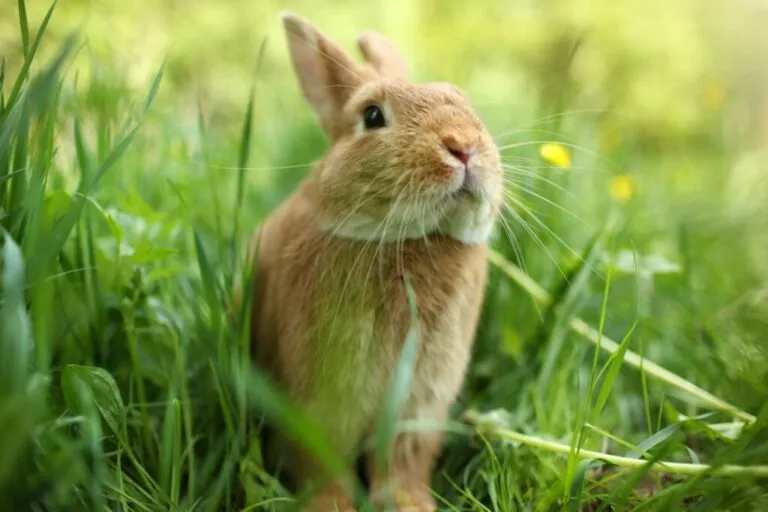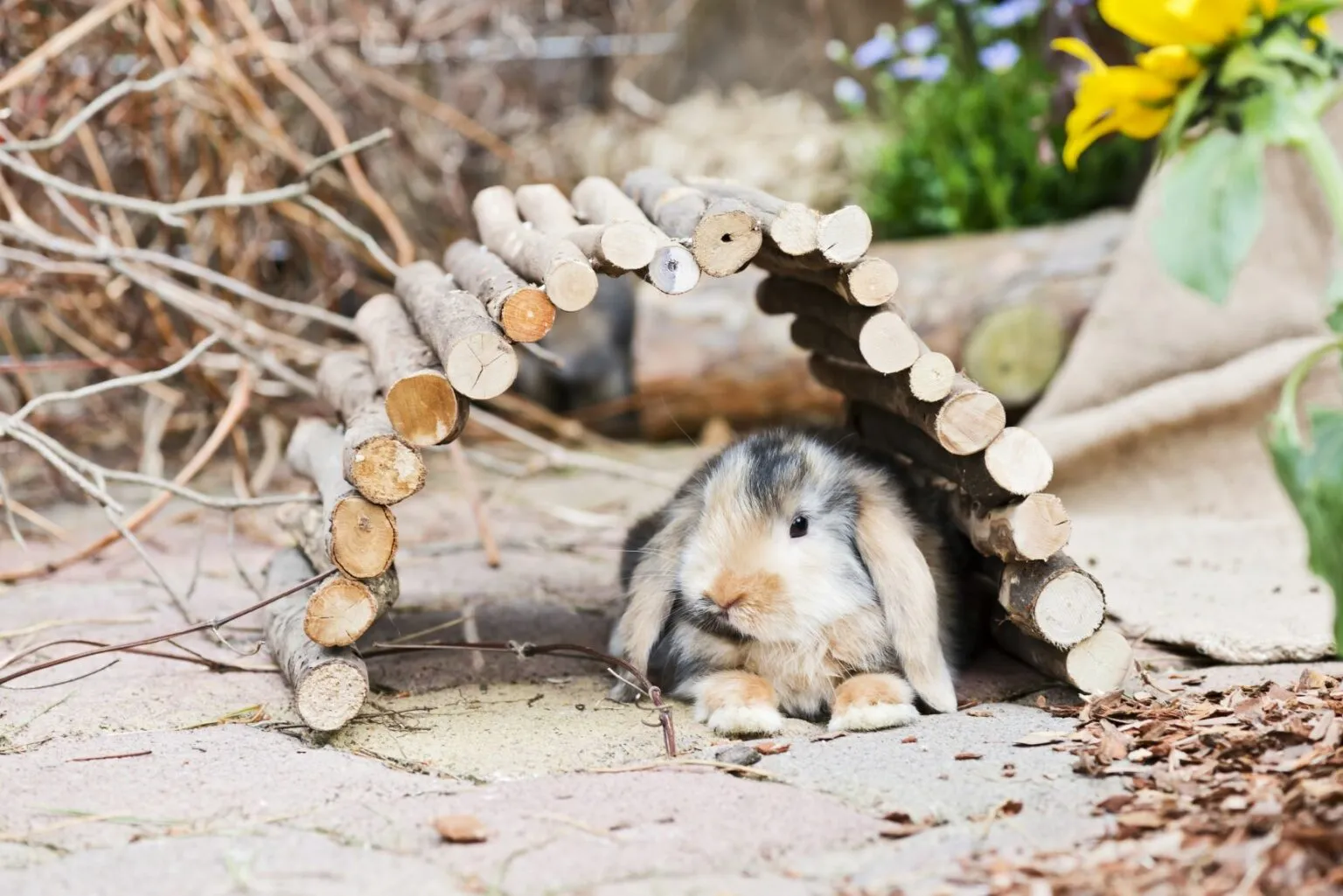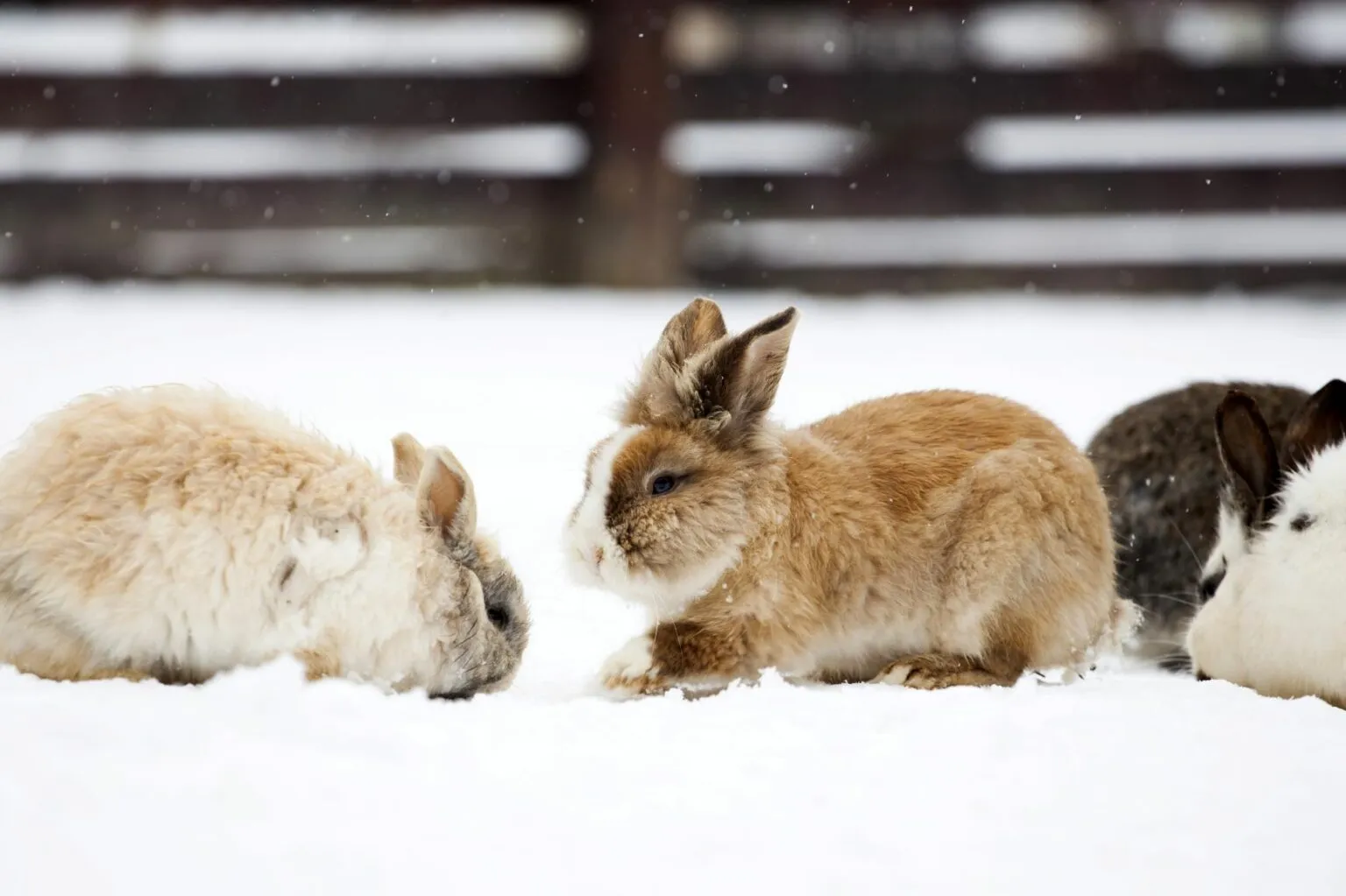Hamster Language
Hamster are much loved pets. Even though they don’t coo like guinea pigs or squeak like rabbits, hamsters have a complex language. Here are a few tips to help you understand your new pet!
Rabbits can be kept outdoors all year round. However, you need to make a few provisions to protect them from the heat, frost, wind and rain. This article will explain everything you need to know when keeping rabbits outdoors.

© © logoboom / stock.adobe.com
Rabbits can be kept outdoors all year round without any problems.
Wether it is 2ºC or 30ºC or more, most rabbits have grown up with these conditions and can be kept outdoors. However, you must make special provisions for keeping rabbits outdoors both in winter and in summer.
Here, you can find out how to make the enclosure in your own garden suitable for both summer and winter.
Rabbits can also be kept indoors, but if you have the opportunity to do so, there are plenty of reasons for keeping them outdoors. These small mammals are tough and feel perfectly at ease even in sub-zero temperatures with snow.
Rabbits love running, jumping, digging and crawling through tunnels – where better to do so than outside? After all, there is easily more space for a suitably large rabbit enclosure outside than there is inside your home. What’s more, if you choose the outdoors, you also don’t need to worry about them chewing at chair legs or leaving droppings on the carpet.
Keeping your rabbit on a balcony is only possible if the balcony is big enough and well secured. A rabbit hutch is insufficient as a permanent outdoor house without additional exercise. This also applies for indoor housing.
 © © Claudia Paulussen / stock.adobe.com
© © Claudia Paulussen / stock.adobe.com
Rabbits have a big urge to move around, so in order to respect their natural habits, you have to allow them sufficient exercise. Therefore, an outdoor enclosure should have an area of at least 6m2. The more rabbits that live with you, the bigger it should be.
In addition, rabbits should be allowed to run freely once a day – naturally in a suitably secured outdoor area. If this isn’t possible, it is recommended to keep rabbits in an enclosure of at least 10m2. A generous area is particularly important during the cold season, because exercise prevents rabbits from getting too cold.
In summer, the enclosure must also offer enough shady spots, ideally provided by high trees. Rabbits usually tolerate strong heat from the sun less well than snow and frost. They absolutely need shady areas to retreat to.
If you have kept your rabbits indoors until now or you have new rabbits in your home, spring is an ideal time for moving outdoors. This is because the days become milder again and there is little difference between indoor and outdoor temperatures.
To avoid putting rabbits under unnecessary strain with the move, it is recommended to get them accustomed to their new outdoor home gradually. Sudden changes in temperature, as well as the abundant fresh food in the form of grass freely available to rabbits outdoors, can damage their small bodies and lead to digestive complaints.
At the start, only put your rabbit outside for about an hour when the grass is dry, and the days are mild. They should be brought inside overnight. They can only stay outside at night too from mid-May when there is no longer any ground frost.
If your rabbits have first been gradually accustomed to being kept outdoors, they can stay outdoors all year round from then. Even the ground frost won’t bother them after that.
When keeping rabbits outdoors, they need sufficient shady areas in summer – either from trees, roofs or awnings. It is important that the heat doesn’t accumulate too much in the shade. Rabbits need airy shady spots and should never be completely exposed to the sun.
From August at the latest, rabbits should be permanently kept outdoors because this is the only way that they can prepare for the cooling temperatures.
Due to the natural reduction in light in the late summer and temperatures slowly cooling, rabbits living outdoors begin to moult and form a thick, warm coat that offers them reliable protection in winter.
In autumn, it is wise to give your rabbit fresh food that is as rich in energy as possible so that it can gain enough weight ahead of winter. A seed mix, corn on the cob to chew, fruit and abundant fresh food are ideal for your pet at this time.
 © © erika8213 / stock.adobe.com
© © erika8213 / stock.adobe.com
Armed with a winter coat and fat, rabbits can now face the cold temperatures without worrying. Outdoor enclosures must meet the following requirements in winter:
During the winter, rabbits need a dry and frost-free area for eating, resting and sleeping. Partial roofing for the enclosure is recommended, for example with corrugated panels or double-webbed sheets. One or more shelters where the rabbits can retreat to are a must all year round.
It is important that rabbits that are kept outdoors are protected inside from wind, rain, draughts, snow and frost. Therefore, you should provide additional protection for mesh doors of the rabbit hutch in winter, for example, with plexiglass or wood. A wool blanket in front of it is also ideal to offer sufficient insulation without restricting ventilation.
In order to maintain protective winter fat for the whole season, rabbits need more calories in winter than in summer, which they get from rabbit food rich in carbohydrates and fat. For instance, fatty seeds like fennel seeds or shelled sunflower seeds are ideal. In addition, vegetables rich in calories like celeriac, turnip cabbage, carrots, parsnips or turnips are suitable options.
It is important to provide small portions of fresh food and vegetables in winter and to change them several times a day so that the food in the outdoor enclosure doesn’t freeze over. Instead of fresh wild herbs, you can now give your rabbit dried herbs which you can supplement with grain flakes like oats.
You should always provide fresh drinking water for your rabbit. Do not use drinking bottles in winter, because your rabbit’s tongue could get stuck to the ice-cold metal. A sufficiently large water bowl placed on the floor is ideal.
Make sure that the drinking water doesn’t freeze in sub-zero temperatures in the enclosure. The bigger the water bowl the better, since the more water, the longer it takes to freeze. On very cold nights, keep a microwave pillow (SnuggleSafe) under the drinking bowl, which will heat the water from underneath for some time.
Tip: To prevent the drinking water in the bowl from freezing, you can also place a table tennis ball on the water. The wind moves the ball around and the movement of the water prevents it from freezing quickly.
Healthy rabbits don’t necessarily need artificial heat in winter. However, external heat sources can be practical in the case of long-lasting frost or in higher altitude regions with abundant snowfall.
Good options include a heated pad for the enclosure or a self-heating thermo blanket. A heat or infrared lamp can also provide warmth in the roofed area of the enclosure. It is important for the heat lamps to be protected from the wind and storms and to be fixed high enough so that it doesn’t get too hot underneath!
When keeping rabbits outdoors, having someone for them to cuddle is even more important than a thermo blanket, heat lamp and the like. They are very sociable animals and should never be kept alone. Regardless of how lovingly a human cares for a rabbit, they can never replace one of its own kind.
Rabbits cuddle and keep each other warm in winter. What’s more, several rabbits are much more active than one on its own.
Almost all healthy rabbits – even dwarf and young rabbits – can be kept outdoors all year round. Only chronically ill or infirm rabbits are better off being kept indoors.
Furthermore, there are a few rabbit breeds that are very susceptible to the weather. These include, long-haired breeds, Rex rabbits and some Lionhead rabbits. They don’t have as thick a top coat and therefore have less protection from the wind, rain and cold. However, these rabbit breeds can stay outdoors in winter as long as their enclosure is sufficiently protected from the wind, rain and snow by roofed areas.
Rabbits can stay outside all year without any problems in a sufficiently large enclosure with plenty of opportunities for playing and suitable protected areas. Even hibernation on frosty nights is very much possible in this case. Most rabbits love snow and generally tolerate the cold better than excessive heat.
Please don’t take your rabbit into your home to warm up quickly in winter! The difference in temperature will do it a lot of harm. Instead, you are doing your rabbit a bigger favour if you keep an eye on it outdoors with its playmates and regularly give it fresh titbits and cosy straw.
Hamster are much loved pets. Even though they don’t coo like guinea pigs or squeak like rabbits, hamsters have a complex language. Here are a few tips to help you understand your new pet!
Speedy the guinea pig sits in his favourite place and observes the world from up high. After a few strenuous hours he is pretty exhausted. First a round of jogging, then a good climb up and down and finally a delicious salad. That is how a guinea pig gets really tired.
Rabbits can be kept outdoors all year round. However, you need to make a few provisions to protect them from the heat, frost, wind and rain. This article will explain everything you need to know when keeping rabbits outdoors.